Intelligent Manufacturing Solutions for Industrial Robots in Multiple Scenarios
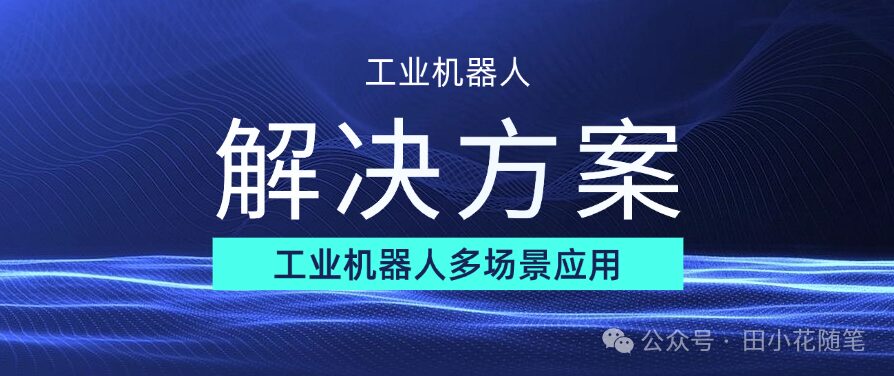
1. Project Background
1.1 Industry Background Analysis
With the in-depth advancement of Industry 4.0 and intelligent manufacturing, industrial robots have become an important driving force for the transformation and upgrading of the manufacturing industry. The global industrial robot market continues to expand, with the International Federation of Robotics (IFR) reporting that the global installation of industrial robots exceeded 500,000 units in 2023, maintaining an annual growth rate of over 15%.
As the largest application market for industrial robots, China has seen its robot density increase from 49 units per 10,000 people in 2015 to 322 units per 10,000 people in 2023, but there remains a significant gap compared to manufacturing powerhouses like South Korea and Japan. Driven by multiple factors such as the transformation and upgrading of the manufacturing industry, the decline of the demographic dividend, and rising labor costs, the application scenarios for industrial robots are continuously expanding from traditional simple applications like welding and handling to more complex fields such as flexible manufacturing and intelligent assembly.
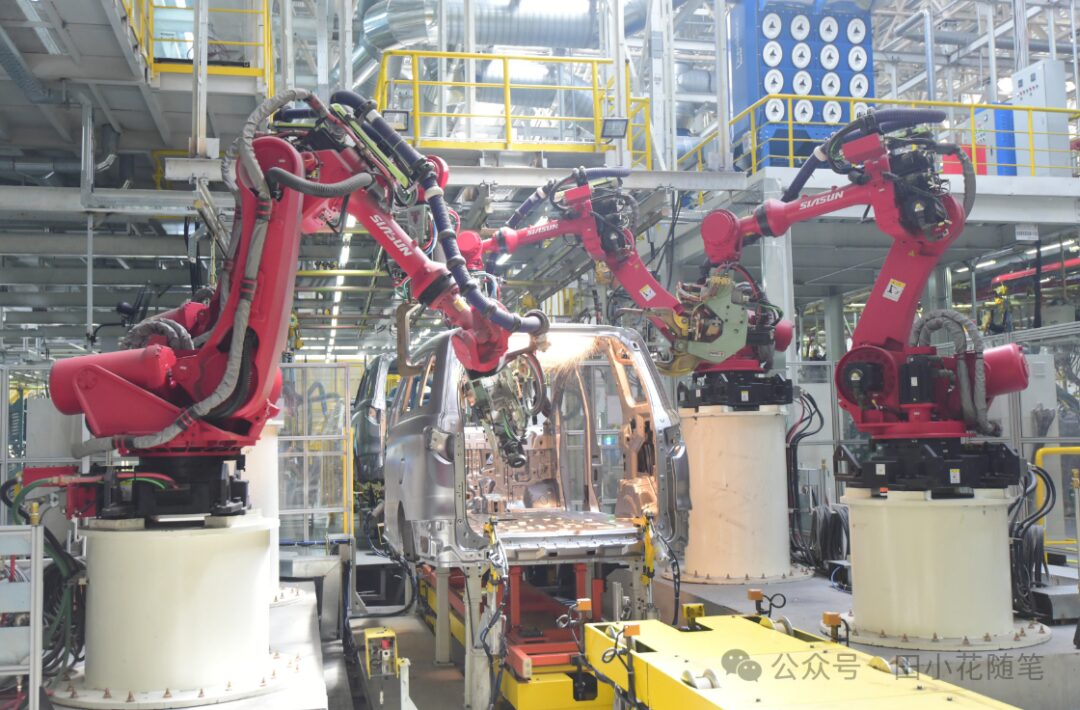
The rapid development of new technologies such as artificial intelligence, 5G, and digital twins has injected new momentum into the development of industrial robots. The application of technologies like intelligent vision, force control, and deep learning has significantly enhanced the robots’ perception capabilities and adaptability, enabling them to handle more complex production tasks. At the same time, the popularization of the industrial internet has promoted the deep integration of robots with other automation devices, forming a more complete intelligent manufacturing system. Against the backdrop of carbon peaking and carbon neutrality, the energy-saving and environmental protection advantages of industrial robots are also becoming increasingly prominent, making them an important lever for the green transformation of the manufacturing industry.
1.2 Current Situation of Enterprises
A large manufacturing enterprise has multiple production bases, covering various fields such as automotive parts, electronic products, and precision machinery.
Currently, the enterprise faces the following problems: firstly, labor costs are rising year by year, skilled workers are severely lost, and production efficiency is difficult to improve; secondly, the pace of product updates is accelerating, leading to increased demands for flexibility on production lines; thirdly, product quality requirements are becoming increasingly stringent, and traditional manual inspection can no longer meet the needs; fourthly, the collection of production data is scattered, and the connectivity of equipment is low, making it difficult to achieve intelligent decision-making and predictive maintenance. The enterprise has introduced industrial robots on some production lines, but there are issues such as mainly single-machine applications, low system integration, and insufficient intelligence levels.
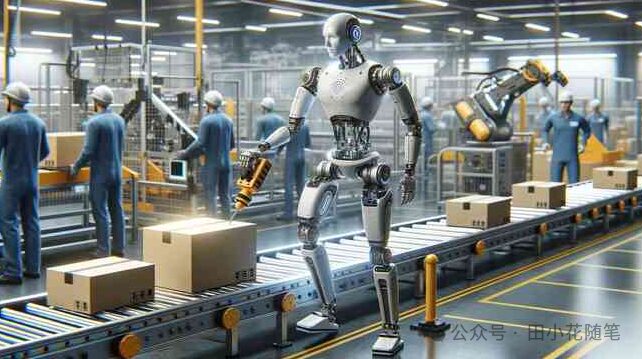
2. Project Objectives
2.1 Overall Objectives
To build an intelligent manufacturing system for industrial robots aimed at multiple application scenarios, achieving flexibility, intelligence, and digitization in the production process, creating a digital twin factory model, and promoting the enterprise’s transformation and upgrading towards intelligent manufacturing. By constructing core technology platforms such as a robot cloud platform, vision system, and force control system, the goal is to achieve collaborative applications of robots in multiple scenarios including welding, assembly, polishing, and inspection, forming a complete intelligent manufacturing solution.
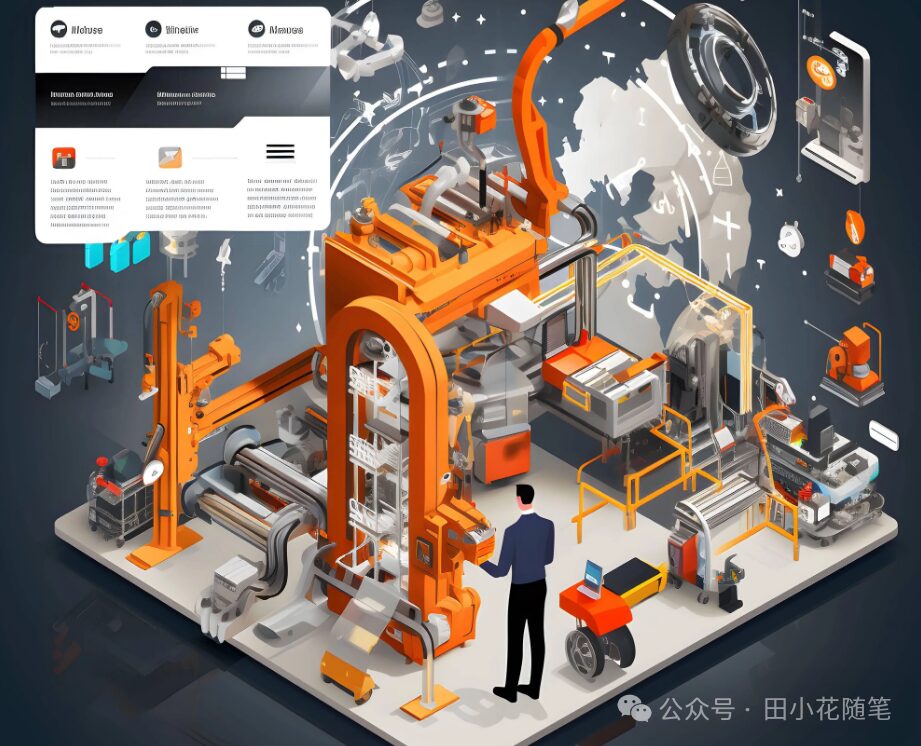
2.2 Specific Objectives
-
Production Efficiency Improvement: Achieve an automation rate of over 85% for key processes through the application of industrial robots, resulting in a production efficiency increase of over 30% and a per capita output value increase of over 50%.
-
Quality Control Optimization: Utilize the robot vision inspection system to improve the first-pass yield of product quality to over 99%, with a defect identification accuracy of over 98%.
-
Flexible Manufacturing Capability: Reduce the rapid switching time of production lines by 50%, shorten the new product introduction cycle by 40%, and increase the efficiency of small-batch production of multiple varieties by 35%.
-
Intelligent Operation and Maintenance Upgrade: Increase overall equipment effectiveness (OEE) to over 85%, achieve a predictive maintenance accuracy of over 90%, and reduce equipment failure rates by 40%.
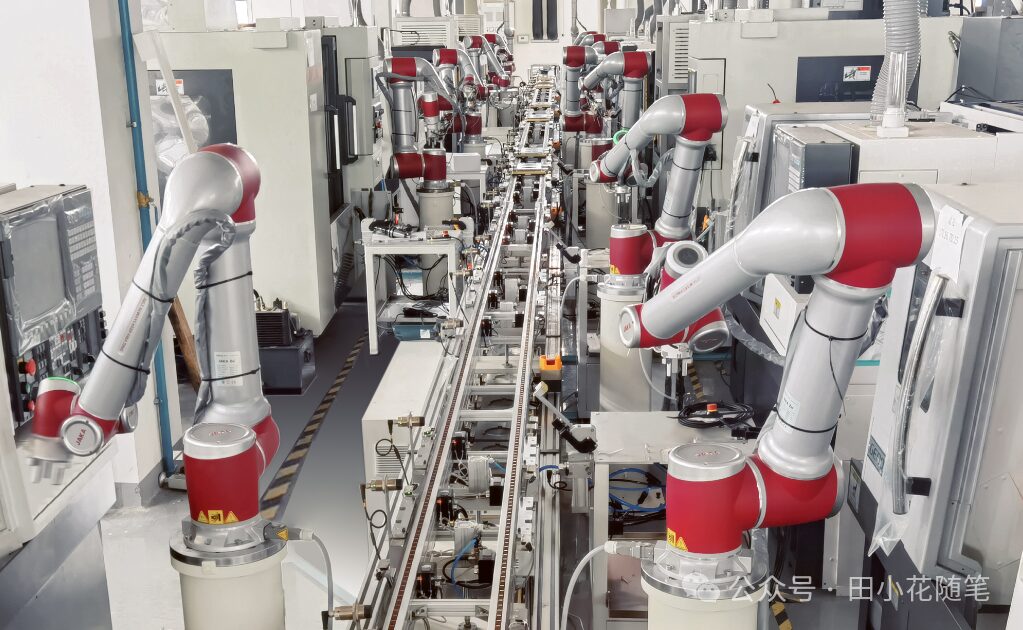
3. Project Pain Points
3.1 Production Efficiency Pain Points
In the traditional manual production mode, enterprises face efficiency bottlenecks and quality fluctuation issues. Taking automotive parts welding as an example, manual welding is inefficient, quality is unstable, and the working environment is harsh. By introducing welding robots, combined with visual positioning and intelligent path planning, welding efficiency can be improved by more than three times, and the first-pass yield of welds can be increased to 99%. At the same time, robots can operate continuously for 24 hours, significantly increasing the utilization rate of the production line.
3.2 Flexible Manufacturing Pain Points
With the acceleration of product updates, production lines are required to have rapid switching and flexible adjustment capabilities. Taking electronic product assembly as an example, traditional rigid automation equipment is difficult to adapt to product changes and requires significant modification costs. By using assembly robots equipped with visual guidance and force control functions, combined with a modular fixture system, rapid switching between different product models can be achieved, significantly enhancing production line flexibility.
3.3 Quality Control Pain Points
With increasing product quality requirements, traditional manual inspection faces issues such as fatigue and subjectivity. Taking precision machinery part inspection as an example, multiple inspections including dimensions, appearance, and functionality need to be performed simultaneously, making it difficult for manual inspection to ensure consistency. By deploying inspection robots equipped with multiple sensors, combined with AI algorithms, full automation, comprehensive, and high-precision inspection can be achieved, significantly improving the level of quality control.
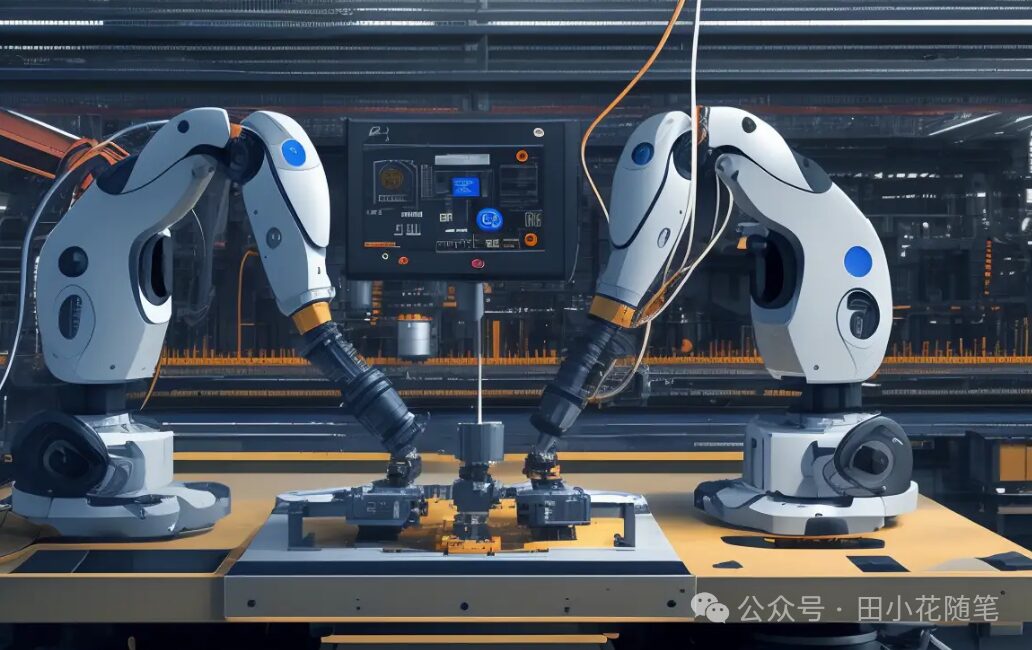
4. Overall Architecture
4.1 Technical Architecture
The technical architecture of this system adopts a layered design, constructing a complete technical system covering the perception control layer, network transmission layer, data processing layer, and application service layer. In the perception control layer, hardware devices such as industrial robots, 3D vision systems, laser radars, and force sensors are deployed to achieve comprehensive perception of the production environment through multi-dimensional data collection. These devices are designed modularly, allowing flexible configuration and expansion according to different scenario needs, ensuring good adaptability and scalability of the system.
In the network transmission layer, a dual communication system based on industrial Ethernet and 5G private network is constructed to achieve device interconnection and real-time data transmission. The industrial Ethernet adopts a ring network architecture with redundancy backup capability to ensure communication reliability; the 5G private network provides high bandwidth and low latency wireless communication capabilities, particularly suitable for scenarios involving mobile robots. At the same time, edge computing nodes are deployed to perform some data processing locally, reducing network transmission pressure.
The data processing layer adopts a distributed architecture, including functional modules for data collection, storage, analysis, and mining. By deploying time-series databases, distributed file systems, etc., efficient management of structured and unstructured data is achieved. At the same time, deep learning frameworks and big data analysis platforms are integrated to provide strong data support for upper-layer applications, enabling intelligent analysis and prediction of the production process.
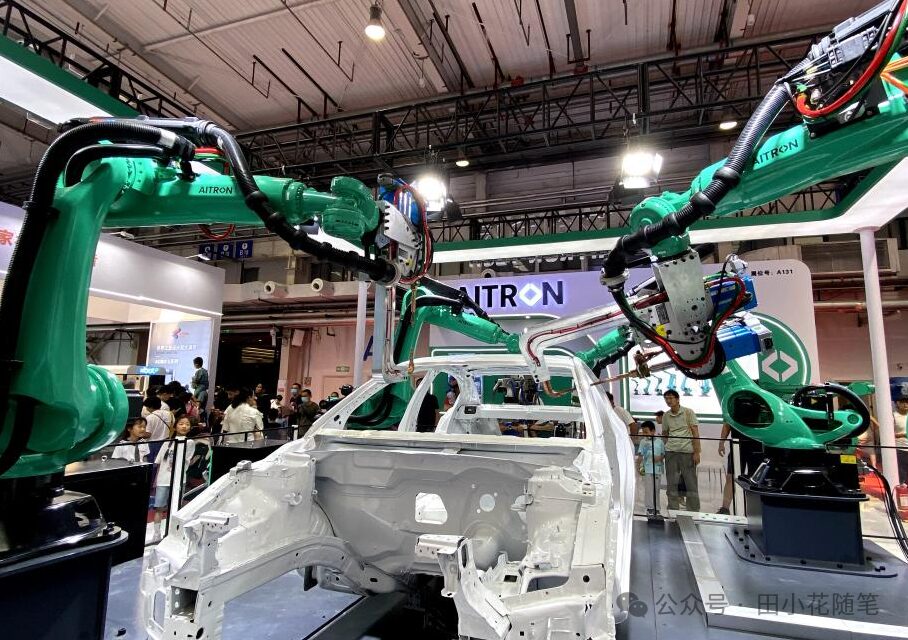
4.2 Functional Architecture
The functional architecture is divided into four major modules: basic support module, intelligent application module, decision analysis module, and system management module. The basic support module provides basic functions such as device management, process management, quality management, and spare parts management, providing a solid foundation for the operation of the entire system. Through a unified device interface and standardized data format, seamless integration between different devices and systems is achieved.
The intelligent application module is the core of the system, including functions such as robot vision guidance, intelligent path planning, collaborative control, and quality inspection. This module deeply integrates artificial intelligence technology, achieving adaptive optimization of process parameters through machine learning algorithms, enhancing the accuracy of visual inspections through deep learning algorithms, and continuously optimizing robot actions through reinforcement learning, greatly improving the intelligence level of the system.
The decision analysis module mainly targets management, providing advanced functions such as production scheduling optimization, quality analysis, energy consumption analysis, and equipment predictive maintenance. This module provides data support for enterprise management decisions by deeply mining historical data and combining it with real-time data analysis. The system adopts visualization technology to intuitively display various analysis results, facilitating quick understanding of production dynamics by management personnel.
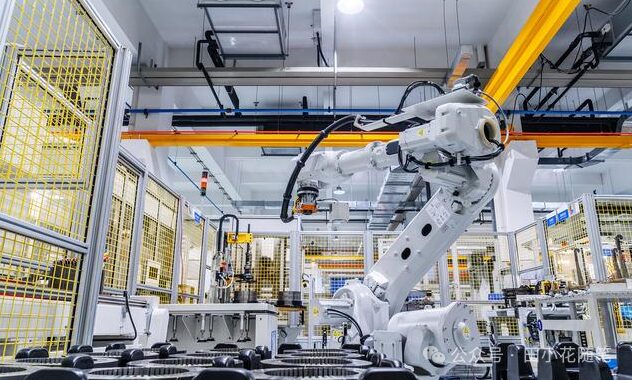
4.3 Data Architecture
The data architecture adopts a “data middle platform + microservices” design concept, constructing a unified data management and service system. In the data collection layer, comprehensive collection of device operating data, process parameters, quality data, environmental data, etc., is achieved through various methods such as OPC UA, industrial buses, and IoT gateways. The collection system supports multi-protocol parsing and data standardization processing, ensuring data integrity and consistency.
The data storage layer adopts a hybrid storage architecture, selecting the most suitable storage solution for different types of data. For real-time data, a time-series database is used for efficient storage; for historical data, a distributed file system is used for massive data storage; for multimedia data, object storage is used to ensure efficient data access. At the same time, a complete data backup and disaster recovery mechanism is established to ensure data security.
The data service layer provides standardized data service interfaces for various applications through a unified API gateway. Adopting a microservices architecture, the data service is divided into multiple independent microservices, supporting flexible expansion and on-demand deployment. Role-based access control and data encryption transmission are implemented to ensure the security of data access. Additionally, rich data analysis tools and visualization components are provided to facilitate user data analysis and presentation.
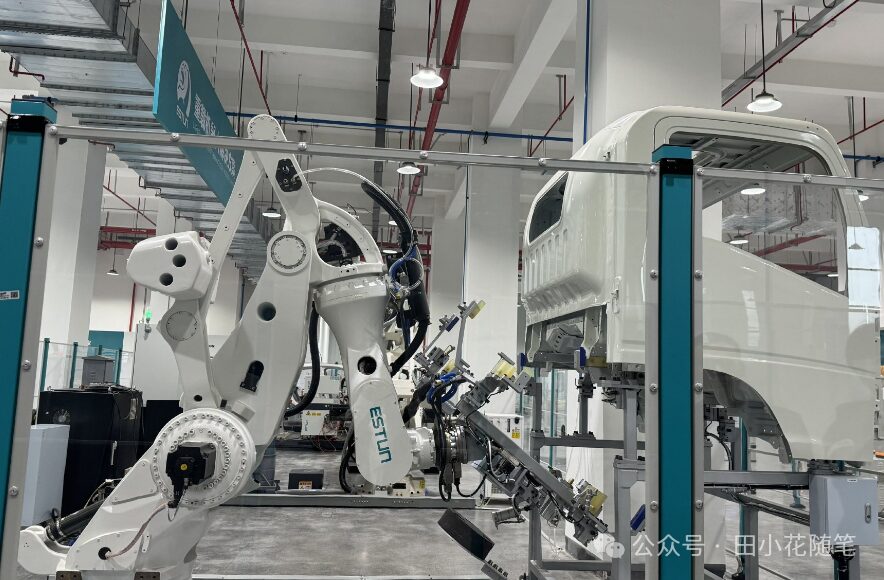
4.4 Security Architecture
The security architecture adopts a defense-in-depth strategy, building an all-round protection system from four dimensions: physical security, network security, application security, and data security. At the physical security level, safety light curtains, protective barriers, emergency stop devices, and other hardware facilities are deployed to ensure the safety of the human-machine collaboration environment. A complete set of safety operating procedures and emergency plans is also established to regulate the behavior of operators.
At the network security level, a multi-level protection strategy is adopted, deploying industrial firewalls, intrusion detection systems, network access control devices, and building a strong network security barrier. Network partitioning and access control strategies are implemented to strictly isolate production networks from office networks. At the same time, comprehensive network traffic monitoring and security auditing are conducted to achieve timely detection and handling of network security threats.
In terms of application security and data security, strict identity authentication and access control mechanisms are implemented, using data encryption, digital signatures, and other technologies to ensure the security of data transmission and storage. A complete data backup and recovery mechanism is established, with regular security assessments and penetration tests conducted to continuously improve system security. Additionally, employee security awareness training is emphasized to foster a good security culture.
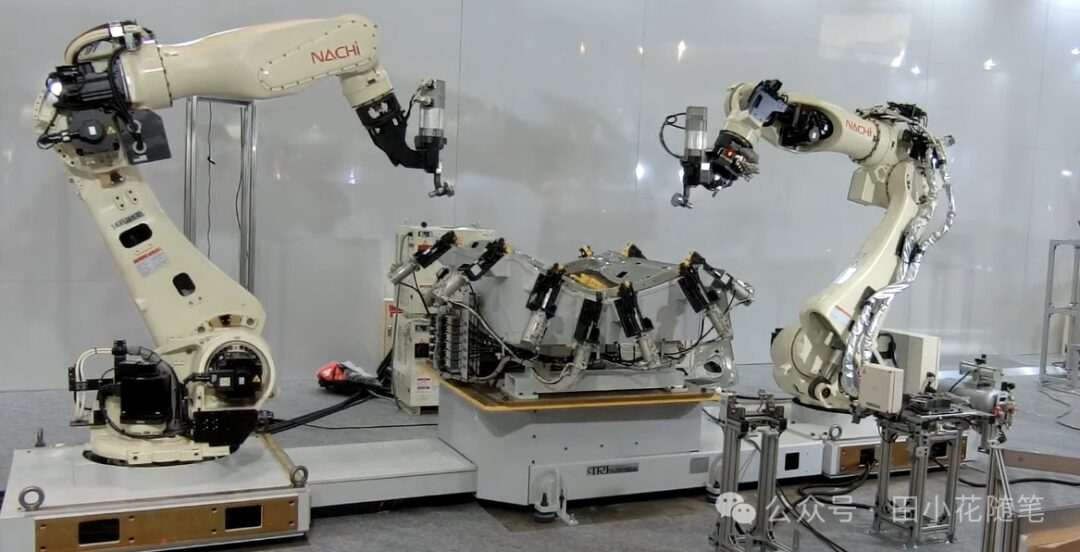
4.5 Integration Architecture
The integration architecture is based on service bus technology, achieving loosely coupled integration between systems. A unified integration specification and standard interface are adopted to support seamless docking with enterprise-level systems such as MES, ERP, and PLM. Through integration adapters and data conversion components, data exchange and collaborative work between heterogeneous systems are realized. Additionally, flexible integration configuration tools are provided to support rapid integration deployment of new systems.
In terms of process integration, a unified process knowledge base is established to achieve standardized management and optimization of process parameters. By building a process model library, automatic configuration and optimization of parameters for different process scenarios are supported. The system provides rich process analysis tools to support process experts in process improvement and innovation, continuously enhancing product quality and production efficiency.
To support future system expansion and upgrades, the integration architecture adopts an open design, reserving rich expansion interfaces. Through a unified service registration and discovery mechanism, dynamic access of new functional modules is supported. At the same time, a complete version management and change control mechanism is established to ensure smooth transitions during system upgrades, maximizing the protection of enterprise investments.
5. Solution Construction Content
5.1 Welding Application Scenarios
-
Visual Guidance Welding: Equipped with a 3D vision system to achieve automatic identification of weld seams and path planning.
-
Intelligent Process Control: Adaptive adjustment of welding parameters based on deep learning.
-
Quality Online Monitoring: Real-time monitoring of welding quality through arc sensors, temperature sensors, etc.
5.2 Assembly Application Scenarios
-
Flexible Assembly Units: Modular design to support flexible assembly of multiple varieties.
-
Force Control Assembly: Integration of force sensors for adaptive assembly of precision parts.
-
Collaborative Work Control: Multi-robot collaborative assembly to improve the efficiency of complex product assembly.
5.3 Intelligent Detection Scenarios
-
Vision Inspection System: Utilizing AI algorithms for automatic identification and classification of defects.
-
Multi-Sensor Fusion: Combining visual, force, and other sensing methods to enhance detection accuracy.
-
Quality Traceability System: Establishing a quality traceability system for the entire product lifecycle.
6. Solution Construction
6.1 Construction Principles
-
Standardization Principle: Using international standard interfaces to ensure system compatibility and scalability.
-
Modular Principle: Adopting modular designs to support flexible configuration and rapid deployment.
-
Intelligence Principle: Deep integration of AI technology to enhance the intelligence level of the system.
6.2 Technical Route
-
Robot Platform: Selecting mainstream brand robots such as ABB and FANUC to ensure stability.
-
Vision System: Using 3D cameras in conjunction with deep learning algorithms for precise positioning.
-
Control System: Adopting a distributed control architecture to support real-time control and remote monitoring.
6.3 Safety Assurance
-
Device Safety: Equipped with safety light curtains, protective barriers, and other hardware protection facilities.
-
Network Security: Using industrial firewalls, encrypted transmission, etc., to ensure data security.
-
Operational Safety: Establishing comprehensive safety management systems and emergency plans.
7. Implementation Plan
7.1 Implementation Strategy
The strategy of “pilot first, phased implementation, continuous optimization” is adopted:
-
Pilot Phase: Select typical production lines for demonstration applications to accumulate experience.
-
Promotion Phase: Implement in batches throughout the factory to achieve full coverage.
-
Optimization Phase: Continuous improvement and upgrades to enhance system performance.
7.2 Implementation Stages
First Stage (3 months): Complete system design and equipment procurement.
Second Stage (6 months): Complete pilot line construction and debugging.
Third Stage (12 months): Complete full promotion and optimization.
7.3 Guarantee Measures
-
Organizational Guarantee: Establish a dedicated project team with clear responsibilities.
-
Technical Guarantee: Establish long-term cooperation mechanisms with equipment manufacturers.
-
Talent Guarantee: Strengthen talent training and establish a professional technical team.
8. Benefit Assessment
8.1 Economic Benefits
-
Direct Benefits:
-
Labor costs reduced by 40%, saving approximately 10 million yuan annually -
Production efficiency increased by 30%, generating an additional output value of approximately 50 million yuan annually -
Quality costs reduced by 35%, saving approximately 8 million yuan annually
-
Indirect Benefits:
-
Energy consumption reduced by 25%, saving approximately 3 million yuan annually -
Equipment maintenance costs reduced by 30%, saving approximately 2 million yuan annually
8.2 Management Benefits
-
Digitalization level improved, achieving visual management of the production process -
Decision-making efficiency increased, management costs reduced -
Quality management level improved, enhancing brand value
8.3 Innovation Benefits
-
A batch of intelligent manufacturing patent technologies formed -
A team of intelligent manufacturing technology experts trained -
Establishment of an intelligent manufacturing standard system
8.4 Sustainable Development
-
Establish a continuous improvement mechanism to maintain technological leadership -
Form a replicable and promotable experience model -
Drive collaborative development of the industrial chain